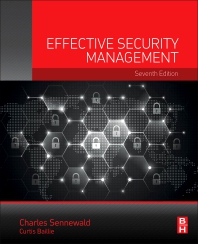

Ironically, the monthly bill all homeowners get and pay is the one they understand the least. Forget cable or satellite, push away cell phone and Internet access, electricity - which powers all the others - is the cost that is most difficult to manage.
Until now.
Some firms, coming primarily from security alarm monitoring, see home energy management as a way to value add to their traditional services or to grab new customers who may initially be attracted to the electricity cost savings and then willing to add on home security.
There is a wild card, however. Utilities are themselves investing in the smart grid and its cornerstone smart meter technology, which initially will save them money by eliminating expensive manual meter reading, but could also allow these utilities to play a significant role in a big slice of the home automation pie, including "hold onto to your keyfobs, folks" home security. An update on smart grid advances will be in the upcoming smartHOME print edition found in SDM’s July issue.
"The installed base of smart meters will reach into the hundreds of millions in the next five years," says Pike Research senior analyst Bob Gohn. "Forward-thinking utilities are carefully making plans for ways that consumers can utilize the new capabilities offered by smart meters, and the smart grid customer experience inevitably includes a strong focus on home energy management." According to a consumer survey conducted by Pike Research, more than half of respondents were very or extremely interested in having a device in their home to monitor and adjust their energy use.
So that slice of the household pie is enormous.
American homes collectively use about 1,379 billion kilowatt hours (kWh) of electricity a year. The average cost of residential electricity - 12¢ per kWh in April 2009 - ranged from 7¢ in North Dakota to 26¢ in Hawaii. But average rates are misleading; most utility rates are tiered, meaning that excessive use is billed at a higher rate. And homeowners continue to add appliances, televisions, computers, devices and systems that will gobble up even more electricity in spite of so-called green initiatives and those spiral-shaped fluorescent light bulbs.
While no single appliance dominates the use of electricity, the largest energy eaters in the average U.S. household are refrigerators and lights, which consume approximately two thirds of all the electricity used in the residential sector. Air conditioning accounts for an estimated 16 percent, space heating 10 percent and water heating nine percent.
So it is not surprising that home energy management is now part of the offerings from traditional home security firms such as APX Alarm and Alarm.com.
Each now has thermostats that wirelessly interface with their home security systems and allow customers to adjust energy use from home or remotely. The approach is already gathering mass market attention on television thanks to locksmith-loving Schlage and its LiNK solution, which includes energy among its home management Z-Wave-based technology. APX and Alarm.com both use Z-Wave. When it comes to home systems, it is obvious that wireless is the thing. Still, most utilities use competing wireless ZigBee for smart meter communications. On the home automation side, Control4 is a ZigBee advocate, for example.
APX Alarm, ranked seven on the SDM 100 largest dealer firms that install, added home energy management to it Go!Control security panel to increase income from existing accounts but also to attract homeowners who want to easily control their energy spending. Jim Nye contends that customers can save up to $24 per month in energy utility bills by using the technology. “This gives us a chance to offer home security and an opportunity for customers to save on their energy bills as well,” says Nye, APX vice president of business development. Z-Wave enabled home lighting and appliance systems can also be controlled by the APX energy panel. There is a $60 up-front fee for the thermostat and $6.99 per month for the fully-supported service.
The programmable thermostat settings are customizable to a homeowner’s schedule. But APX makes it easier with three pre-programmed settings based on “Energy Star” guidelines that differ according to desired energy bill savings with “three setback point schedules for both cooling and heating with just a click,” Nye comments. Uniquely, the APX approach boasts audio monitoring for alarm verification.
Wireless and Web-enabled Alarm.com this month launched what it calls emPower, a collection of automation and remote energy management solutions priced at about a couple of dollars a month for its dealers.
Mirroring the Schlage model, the Alarm.com’s Z-Wave service enables consumers to remotely monitor and control lights, locks and thermostats and manage energy consumption at their properties. With emPower, Alarm.com customers can receive real-time email and text message notifications when a thermostat setting is changed or a specific door lock is accessed. “Since our inception ten years ago, we’ve focused on building a very robust and flexible remote monitoring and control platform that could expand beyond security to support other mission-critical applications in the home,” says Alison Slavin, Alarm.com’s vice president of product management. This is “designed to meet the needs of anyone looking to reduce their energy consumption and have greater control of their property’s critical systems from afar,” says Slavin.
As with its other services, dealers will brand the Alarm.com smart thermostat offering, which joins light, appliance and lock monitoring and controls. “Customers can create and change their own rules and schedules through a Web site interface,” adds Slavin.
There has been an ongoing dust-up between Z-Wave and ZigBee for the sweet spot of wireless for home systems beyond the giant of wireless home computer networks, WiFi.
Z-Wave is a proprietary, though widespread, technology intended mostly for home automation. Sigma Designs, through its acquisition of Zensys, owns the Z-Wave wireless mesh network ecosystem. ZigBee is an IEEE 802.15.4 standard-based technology intended for heavy-duty control operations beyond the home. It is also widespread with more frequency options and slightly higher bit rates. The two technologies are not compatible with one another although the rumor is that there will be a blending based on demands from smart grid.
According to Mary Miller, director of marketing for the Z-Wave Alliance, Z-Wave is an open consortium of more than 160 manufacturers. Z-Wave products and applications fall into every conceivable area of control for residential and light commercial environments. These include lighting, HVAC and security control, as well as home theaters, automated window treatments, pool and spa controls, garage and access controls and more. Z-Wave unifies all home electronics into an integrated wireless network, with no complicated programming and no new cables to run. Any Z-Wave enabled device can be added to the network, and many non-Z-Wave devices can be made compatible by simply plugging them into a Z-Wave accessory module.
Facing competition from utilities and their ZigBee IEEE standard, Miller is confident that utilities may find it more challenging to succeed with expanded services. “They look at homeowners as rate payers,” she says, while firms such as Schlage, APX and Alarm.com have a finer focus on customer needs.





